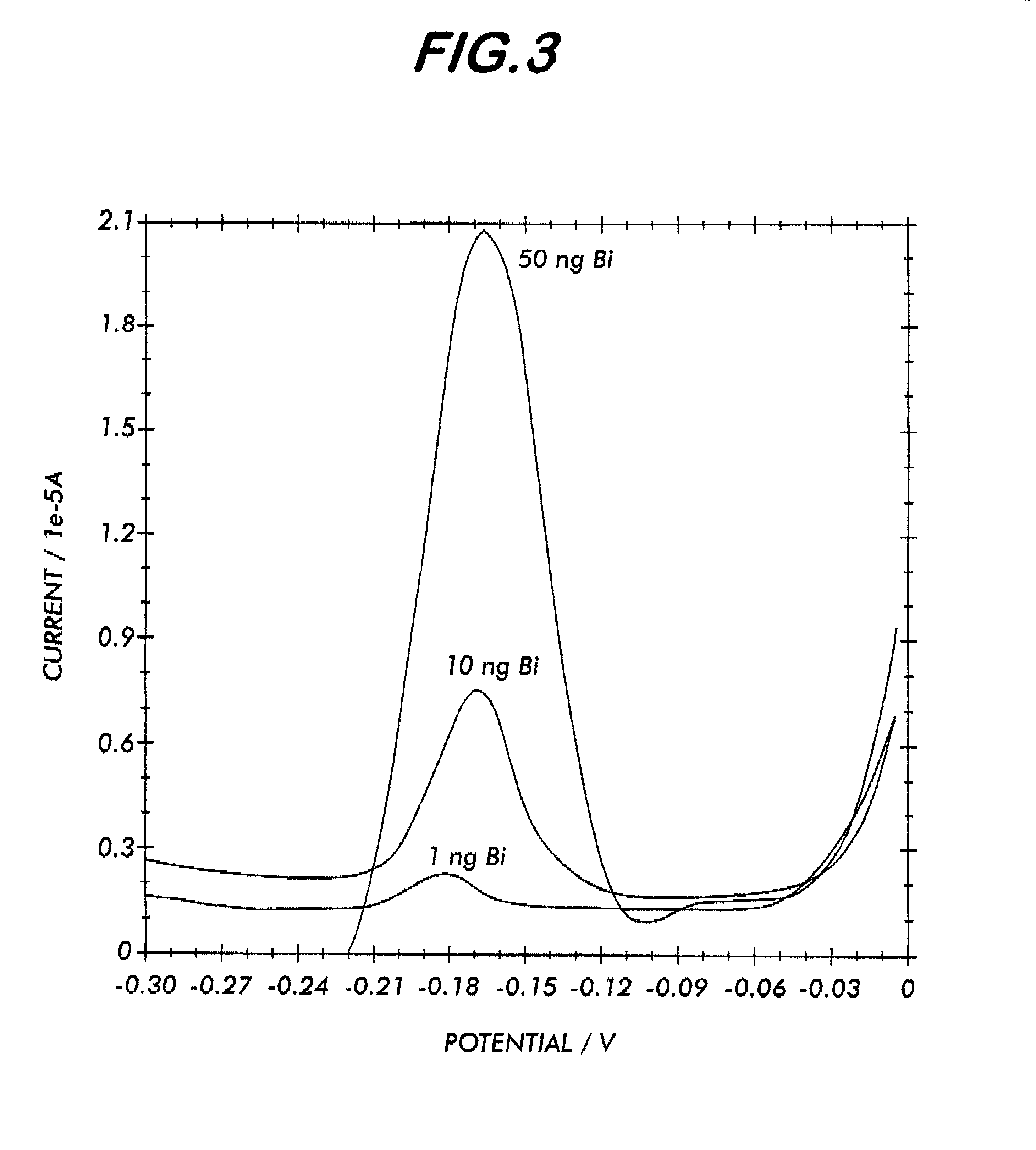System for electrochemical quantitative analysis of analytes within a solid phase and affinity chromatographic test strip
a technology of affinity chromatography and electrochemical quantitative analysis, which is applied in the direction of isotope separation, flow control, electrolysis, etc., can solve the problems of inability to accurately quantitatively monitor the level of analytes, method is impractical and cumbersome, and the rapid test is generally unsuitable for precise quantitative monitoring of analyte levels. , to achieve the effect of wide linear range, low cost and high sensitivity
- Summary
- Abstract
- Description
- Claims
- Application Information
AI Technical Summary
Benefits of technology
Problems solved by technology
Method used
Image
Examples
example 1
A. Preparation of Materials
1. Preparation of Bi.sup.3+ Labeled Ligand
0.1 g DTPA and 0.174 ml Triethylamine were dissolved in 2 ml water with gentle heating. The resulting solution was lyophilized to yield a glassy residue and then such residue was dissolved in 2 ml acetonitrile with gentle heating. This solution was added to 0.034 ml isobutychloroformate in an ice bath during stirring for half hour. The resulting anhydrided, DTPA (127 mM), was then reacted with anti-HCG, anti-HBsAg or anti-Myoglobin MAB antibody in 10 mM PBS, pH7.2 at a molar ratio of 100:1 at room temperature for one hour. The reaction mixture was then dialyzed against 0.5L of citrate buffer (0.25M, pH5.5) at 4.degree. C., changing the buffer solution three times for every one hour and the fourth time, for overnight (Note: remove away the free anhydrided DTPA). 0.5 ml, 100 mM excess of Bi.sup.3+ was added to 1 ml dialyzed solution and incubated for one hour at room temperature. The Bi.sup.3+ labeled protein was dia...
PUM
| Property | Measurement | Unit |
|---|---|---|
| concentrations | aaaaa | aaaaa |
| area | aaaaa | aaaaa |
| concentration | aaaaa | aaaaa |
Abstract
Description
Claims
Application Information
 Login to View More
Login to View More - R&D
- Intellectual Property
- Life Sciences
- Materials
- Tech Scout
- Unparalleled Data Quality
- Higher Quality Content
- 60% Fewer Hallucinations
Browse by: Latest US Patents, China's latest patents, Technical Efficacy Thesaurus, Application Domain, Technology Topic, Popular Technical Reports.
© 2025 PatSnap. All rights reserved.Legal|Privacy policy|Modern Slavery Act Transparency Statement|Sitemap|About US| Contact US: help@patsnap.com



